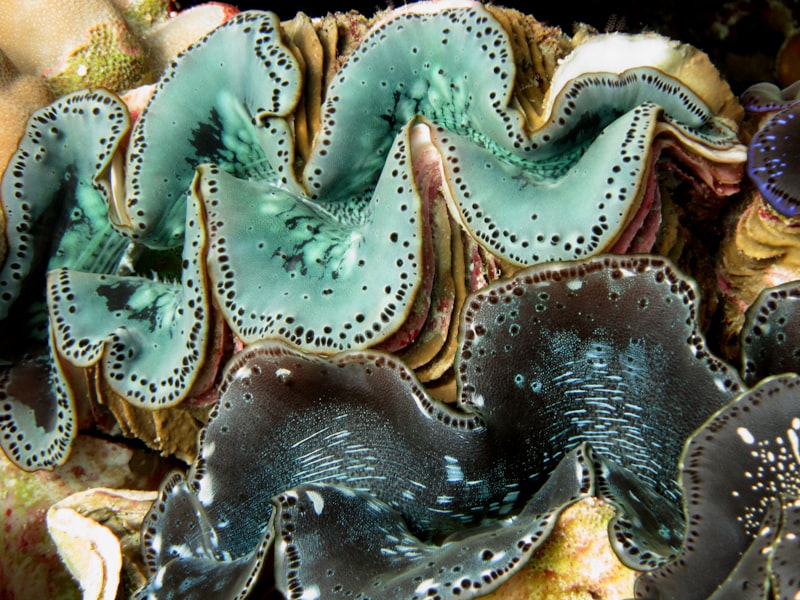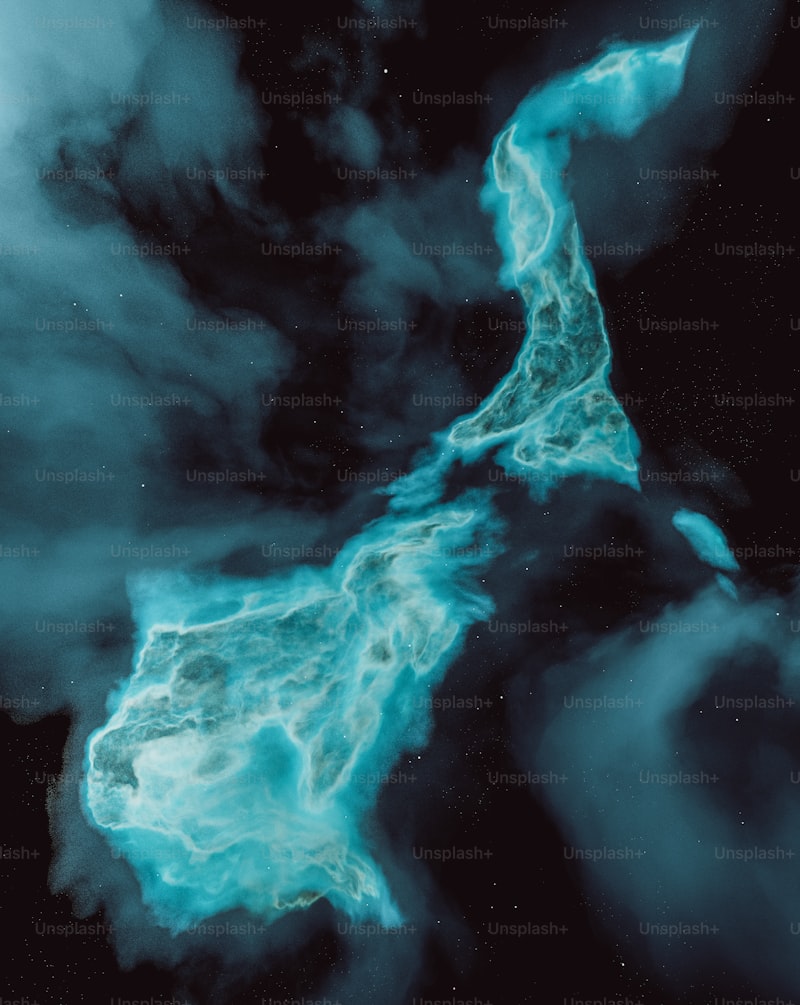One of the most captivating aspects of bioluminescence is its diversity. From microscopic plankton to large fish like the flashlight fish, these organisms span the size spectrum but share the common trait of producing light. How do they do it? Within their bodies, these creatures harbor specialized cells or organs that contain chemicals capable of producing light through biochemical reactions. This ability serves various purposes, from attracting mates to confusing predators or even luring prey.
Take the deep-sea anglerfish, for instance. Its bioluminescent lure dangles in front of its mouth like a fishing pole, tempting curious smaller fish right into its jaws. It’s a strategy both efficient and mesmerizing in its execution. Similarly, fireflies use bioluminescence not only for courtship displays but also to signal danger or repel predators, showcasing the versatility of this natural phenomenon.
Bioluminescence isn’t limited to marine environments either. Fireflies light up summer nights, enchanting observers with their synchronized flashes. Even certain fungi and bacteria on land can glow in the dark, adding an ethereal glow to forests and caves.
What makes bioluminescence even more captivating is its role in scientific research and innovation. Scientists are harnessing the biochemical processes behind bioluminescence to develop new technologies, such as biosensors and imaging tools used in medical diagnostics and environmental monitoring.
Nature’s Light Show: Exploring the Wonders of Bioluminescent Organisms
Imagine walking along a secluded beach at night, where the waves sparkle with an otherworldly glow. This mesmerizing phenomenon is nature’s own light show, created by bioluminescent organisms. These remarkable creatures have fascinated scientists and adventurers alike for centuries, blending science fiction with the marvels of the natural world.
Bioluminescence is the ability of living organisms to produce light through a chemical reaction. It’s not just limited to deep-sea creatures; fireflies, certain fungi, and even some microorganisms exhibit this enchanting trait. The light is produced when a molecule called luciferin reacts with oxygen, facilitated by an enzyme called luciferase. This process emits a cold light, meaning virtually no heat is produced, unlike traditional incandescent bulbs.
One of the most famous displays of bioluminescence occurs in the waters of certain coastal regions around the world. Dinoflagellates, tiny marine plankton, light up when disturbed, creating glowing waves and trails as they move. Imagine kayaking through these bioluminescent bays at night, each paddle stroke leaving a trail of light in your wake. It’s a magical experience, like navigating through a sea of stars.
The phenomenon serves multiple purposes for these organisms. Some use it as a defense mechanism to startle predators or attract prey. Others, like the anglerfish, use bioluminescence as a lure, dangling a glowing appendage to draw curious prey close enough for a meal.
Scientifically, bioluminescence remains a fascinating area of study. Researchers are exploring its potential applications in medicine, environmental monitoring, and even as a source of sustainable lighting. Imagine streets lit by bioluminescent trees instead of traditional street lamps, reducing energy consumption and pollution.
Nature’s light show, courtesy of bioluminescent organisms, reminds us of the incredible diversity and ingenuity of life on Earth. It’s a testament to nature’s ability to inspire and captivate us, offering glimpses into a world that often seems more like magic than reality.
Glowing in the Dark: How Bioluminescent Organisms Illuminate the Depths
Bioluminescence is a fascinating biochemical process where living organisms produce light. It’s not just limited to one species but spans across various groups, from marine creatures like plankton and jellyfish to insects and fungi on land. These organisms possess special light-producing molecules, such as luciferin and luciferase, which react together to emit light. This light serves a multitude of purposes, from attracting mates and confusing predators to luring prey.
One of the most enchanting examples of bioluminescence is seen in deep-sea creatures. In the abyssal depths where sunlight cannot penetrate, bioluminescent organisms use their glowing abilities for communication and survival. Fish use bioluminescent patterns to camouflage themselves or to signal others in their school. Some squid species deploy bioluminescent displays to dazzle predators, buying them precious seconds to escape.
On land, fireflies are perhaps the most familiar bioluminescent insects. They use their light to attract potential mates in a beautiful dance of flickering signals. Fireflies’ bioluminescent glow is a result of efficient chemical reactions in their light-emitting organs, a process so effective it’s being studied for applications in medical imaging and biotechnology.
Bioluminescence isn’t just a spectacle; it’s also a field of scientific intrigue. Researchers study these glowing organisms to unlock secrets of their biochemical processes, aiming to harness their light-producing abilities for various practical uses.
Bioluminescent organisms illuminate the world in ways that captivate our imagination and reveal the hidden wonders of nature. Whether deep beneath the ocean’s surface or in the quiet of a forest, their glowing presence reminds us of the awe-inspiring diversity and ingenuity of life on Earth.
The Secret Language of Light: Bioluminescence in Nature’s Most Unexpected Places
Imagine wandering through a dark, dense forest where each step sets off a sparkling spectacle of tiny lights. Here, fungi like the foxfire emit an ethereal glow, guiding nocturnal creatures and leaving humans in awe. This natural illumination, created through a biochemical reaction within the fungi, serves as a beacon in the night, a gentle reminder of nature’s quiet power.
Beneath the ocean’s surface lies another realm of bioluminescent marvels. Jellyfish, with their delicate, translucent bodies, light up the depths with a soft radiance. This ability not only aids in navigation but also serves as a defense mechanism against predators. Imagine the deep-sea anglerfish, dangling its bioluminescent lure to attract unsuspecting prey in the darkness, an adaptation that speaks volumes about survival strategies in the harsh abyss.

Even in the tiniest organisms, bioluminescence plays a vital role. Fireflies flicker in summer meadows, their rhythmic flashes communicating everything from mating calls to warnings. It’s a mesmerizing dance orchestrated by nature, where light becomes language and darkness holds its secrets.
From the depths of the ocean to the canopy of the rainforest, bioluminescence remains one of nature’s most unexpected and enchanting phenomena. Each flicker and glow tells a story of adaptation, communication, and survival in the world’s most unlikely places. It’s a reminder that sometimes, the brightest lights can emerge from the darkest corners, illuminating our understanding of the natural world one shimmer at a time.
Beyond Fireflies: Unveiling the Diversity of Bioluminescent Life Forms
Have you ever marveled at the twinkling lights of fireflies on a warm summer evening? Those magical moments are just the beginning of the fascinating world of bioluminescent creatures. Bioluminescence, the ability of living organisms to produce light, is not limited to fireflies alone. In fact, it’s a phenomenon that spans across a diverse array of species, each with its own unique way of harnessing and emitting light.
One of the most intriguing examples of bioluminescence can be found in the deep sea. Here, in the darkest depths where sunlight cannot penetrate, creatures like the anglerfish use bioluminescent lures to attract prey. Imagine a tiny fish dangling a glowing lure in front of its gaping mouth like a fisherman’s bait, all to catch a meal in the eternal darkness of the abyss.
But bioluminescence isn’t confined to the depths of the ocean. On land, there are organisms like the glowworms that illuminate caves and forests with their soft, radiant glow. These tiny creatures use their light to attract mates or prey, creating a spectacle that feels straight out of a fairy tale.
The diversity of bioluminescent life forms extends beyond just insects and fish. Even fungi and bacteria participate in this illuminating phenomenon. Certain species of mushrooms emit a faint greenish glow in the dark, adding an eerie beauty to the forest floor. Bioluminescent bacteria, on the other hand, can be found in various marine environments, where their light serves multiple purposes from communication to defense mechanisms.
Scientists continue to uncover new species and understand the mechanisms behind bioluminescence. It’s a field that not only captivates the imagination but also holds potential for applications in medicine, technology, and environmental conservation. By studying these glowing organisms, researchers hope to unlock the secrets of their light-producing abilities, which could lead to innovations ranging from medical imaging techniques to sustainable lighting solutions.
Next time you encounter the enchanting glow of a firefly, remember that it’s just one shimmering thread in the intricate tapestry of bioluminescent life forms. From the depths of the ocean to the canopies of tropical forests, nature continues to dazzle us with its luminous creations, each one a testament to the wonder and diversity of life on Earth.
Oceanic Magic: Discovering Bioluminescent Marine Creatures
Imagine diving into the abyss of the ocean at night, where every movement stirs a galaxy of blue-green sparks. Bioluminescence isn’t just a phenomenon—it’s nature’s own light show, a symphony of glowing organisms. From microscopic plankton like dinoflagellates to larger creatures such as jellyfish and deep-sea fish, these organisms produce light through chemical reactions within their bodies.

The magic of bioluminescence serves multiple purposes in the ocean’s ecosystem. It acts as a defense mechanism, where some creatures use their bioluminescent glow to distract predators or even to lure prey. Others use it for communication, emitting light signals to attract mates or to coordinate movements within their schools.
One of the most famous displays of bioluminescence occurs with the glow-in-the-dark waves caused by blooming phytoplankton. This breathtaking phenomenon, often seen in locations like the Maldives or California’s coastline, turns crashing waves into ribbons of shimmering light, enchanting anyone lucky enough to witness it.
Bioluminescence isn’t just a biological marvel; it’s a reminder of the vast mysteries our oceans hold. It teaches us about adaptation, survival, and the incredible diversity of life forms that thrive in Earth’s final frontier. Studying these creatures not only sheds light on their evolutionary adaptations but also inspires biomimetic technologies, where scientists look to replicate nature’s light-producing abilities for various practical applications.

In essence, bioluminescent marine creatures illuminate the hidden beauty of our oceans, captivating our imaginations and reminding us of the wonders that lie beneath the surface. As we continue to explore and protect our marine environments, these glowing organisms serve as both a source of scientific fascination and a poignant symbol of the delicate balance of life in Earth’s waters.
Frequently Asked Questions
How is bioluminescence studied by scientists?
Learn how scientists study bioluminescence, exploring the mechanisms behind glowing organisms. Discover methods like genetic analysis, biochemical assays, and field observations to unravel its biological and ecological significance.
What causes bioluminescence in organisms?
Bioluminescence in organisms is caused by chemical reactions within specialized cells called photophores. These reactions involve luciferin, an enzyme called luciferase, and oxygen, resulting in the emission of light. This phenomenon is primarily seen in marine organisms, such as certain species of fish and plankton, and serves various purposes including communication, camouflage, and attracting prey.
How do bioluminescent organisms use light?
Learn how bioluminescent organisms generate and use light to attract prey, communicate, and deter predators.
What are the benefits of bioluminescence?
Discover the advantages of bioluminescence, a natural phenomenon where organisms produce light. Explore its benefits, including enhanced communication, predator deterrence, and scientific research applications.
Where can bioluminescent organisms be found?
Discover where bioluminescent organisms can be found and learn about their natural habitats.


